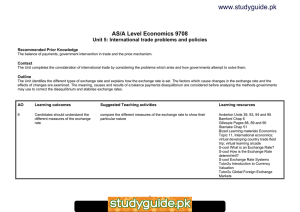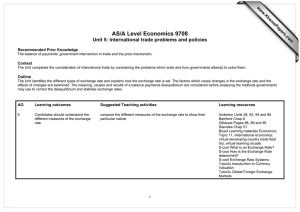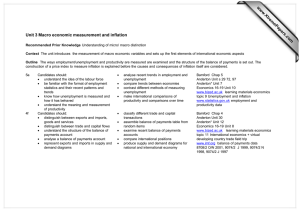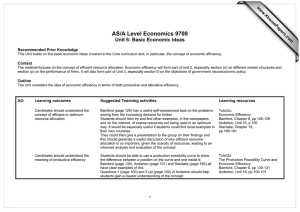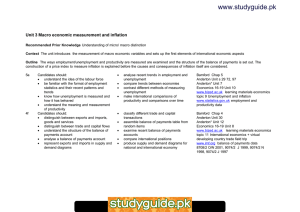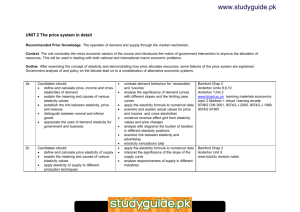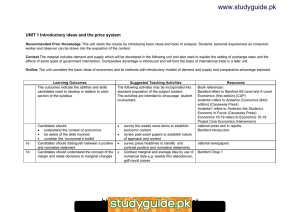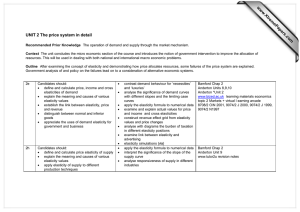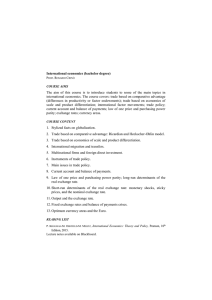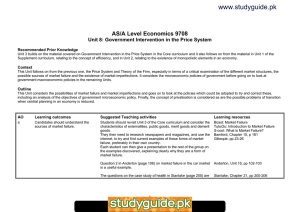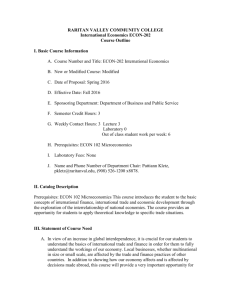Unit 5 International trade problems and policies
advertisement
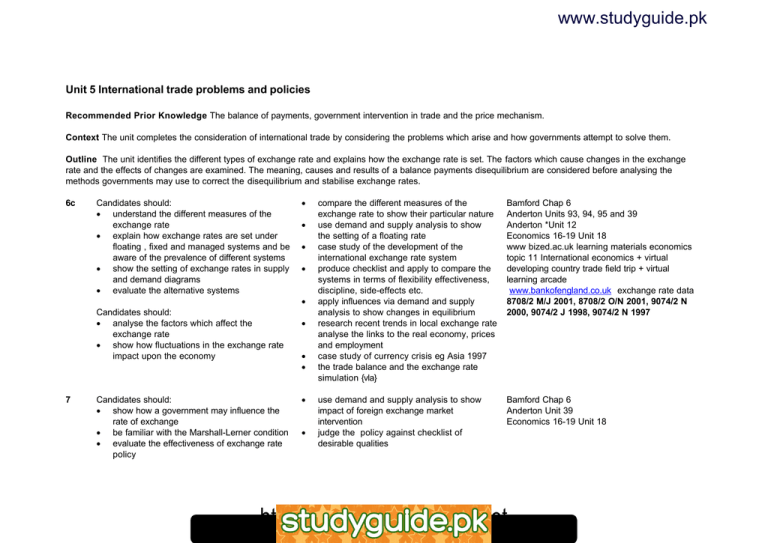
www.studyguide.pk
Unit 5 International trade problems and policies
Recommended Prior Knowledge The balance of payments, government intervention in trade and the price mechanism.
Context The unit completes the consideration of international trade by considering the problems which arise and how governments attempt to solve them.
Outline The unit identifies the different types of exchange rate and explains how the exchange rate is set. The factors which cause changes in the exchange
rate and the effects of changes are examined. The meaning, causes and results of a balance payments disequilibrium are considered before analysing the
methods governments may use to correct the disequilibrium and stabilise exchange rates.
6c
Candidates should:
• understand the different measures of the
exchange rate
• explain how exchange rates are set under
floating , fixed and managed systems and be
aware of the prevalence of different systems
• show the setting of exchange rates in supply
and demand diagrams
• evaluate the alternative systems
Candidates should:
• analyse the factors which affect the
exchange rate
• show how fluctuations in the exchange rate
impact upon the economy
7
Candidates should:
• show how a government may influence the
rate of exchange
• be familiar with the Marshall-Lerner condition
• evaluate the effectiveness of exchange rate
policy
•
•
•
•
•
•
•
•
•
•
compare the different measures of the
exchange rate to show their particular nature
use demand and supply analysis to show
the setting of a floating rate
case study of the development of the
international exchange rate system
produce checklist and apply to compare the
systems in terms of flexibility effectiveness,
discipline, side-effects etc.
apply influences via demand and supply
analysis to show changes in equilibrium
research recent trends in local exchange rate
analyse the links to the real economy, prices
and employment
case study of currency crisis eg Asia 1997
the trade balance and the exchange rate
simulation {vla}
Bamford Chap 6
Anderton Units 93, 94, 95 and 39
Anderton *Unit 12
Economics 16-19 Unit 18
www bized.ac.uk learning materials economics
topic 11 International economics + virtual
developing country trade field trip + virtual
learning arcade
www.bankofengland.co.uk exchange rate data
8708/2 M/J 2001, 8708/2 O/N 2001, 9074/2 N
2000, 9074/2 J 1998, 9074/2 N 1997
use demand and supply analysis to show
impact of foreign exchange market
intervention
judge the policy against checklist of
desirable qualities
Bamford Chap 6
Anderton Unit 39
Economics 16-19 Unit 18
http://www.xtremepapers.net
www.studyguide.pk
6b
Candidates should understand the meaning of
equilibrium and disequilibrium in the balance of
payments
understand how a disequilibrium may arise
analyse the effects of a disequilibrium on the
economy and its position globally
study balance of payments figure over time
e.g. USA and Japan
compare economic characteristics and
performance of surplus and deficit countries
discuss ion on the problems of running a deficit
case study of deficit country
7
Candidates should understand the different policy
approaches
show how demand management, supply side and
exchange rate policies operate to correct a
balance of payments disequilibrium
evaluate the effectiveness of the different
policies used to improve the balance of payments
produce grid to contrast nature, targets,
advantages and disadvantages of the different
policies.
judge the policies against checklist of desirable
qualities
balance of payments policy game
Bamford Chap 6
Anderton Units 96 and 30
Anderton* Unit 12
www.bized.ac.uk virtual developing country
trade field trip
www.imf.org World Economic Outlook and
balance of payments data
Bamford Chap 7
Anderton Units 36-40, 96
www.bized.ac.uk learning materials economics
topic 11 International economics + virtual
developing country trade field trip
www.imf.org World Economic Outlook.
